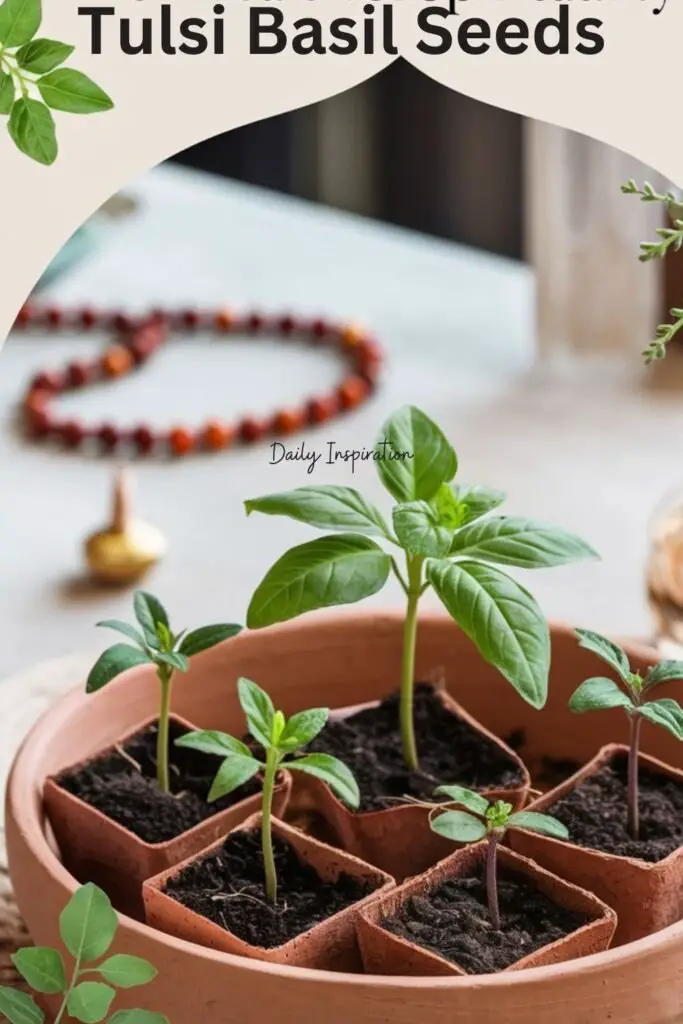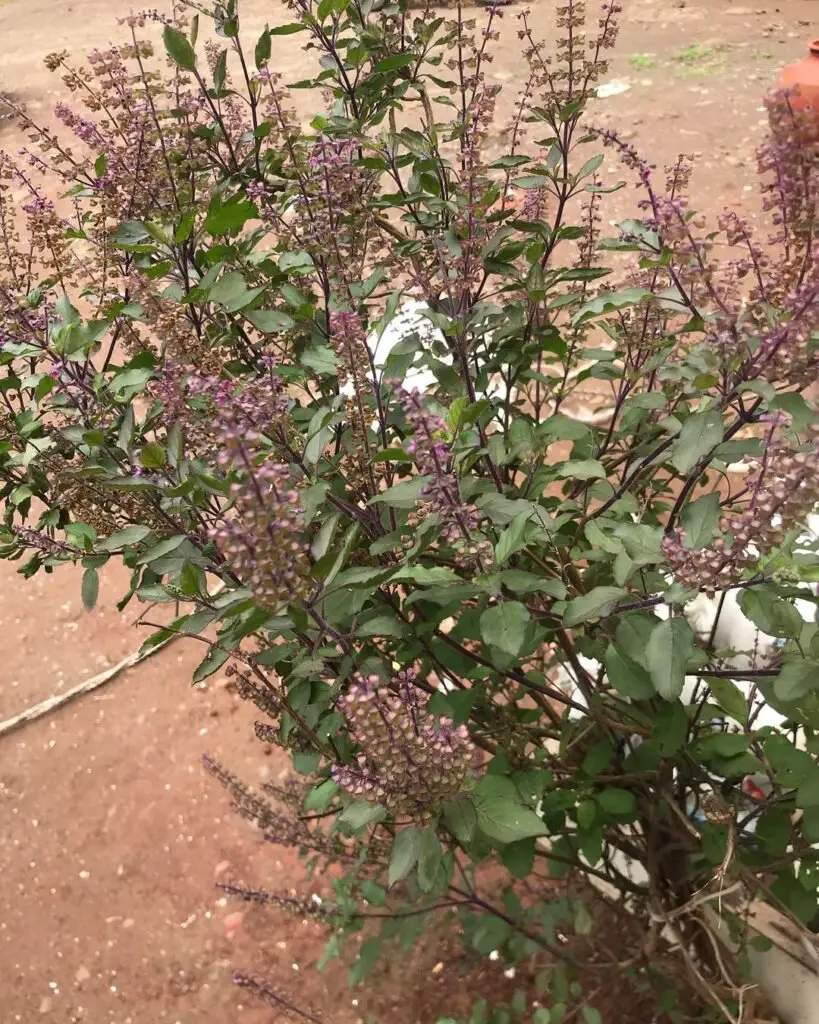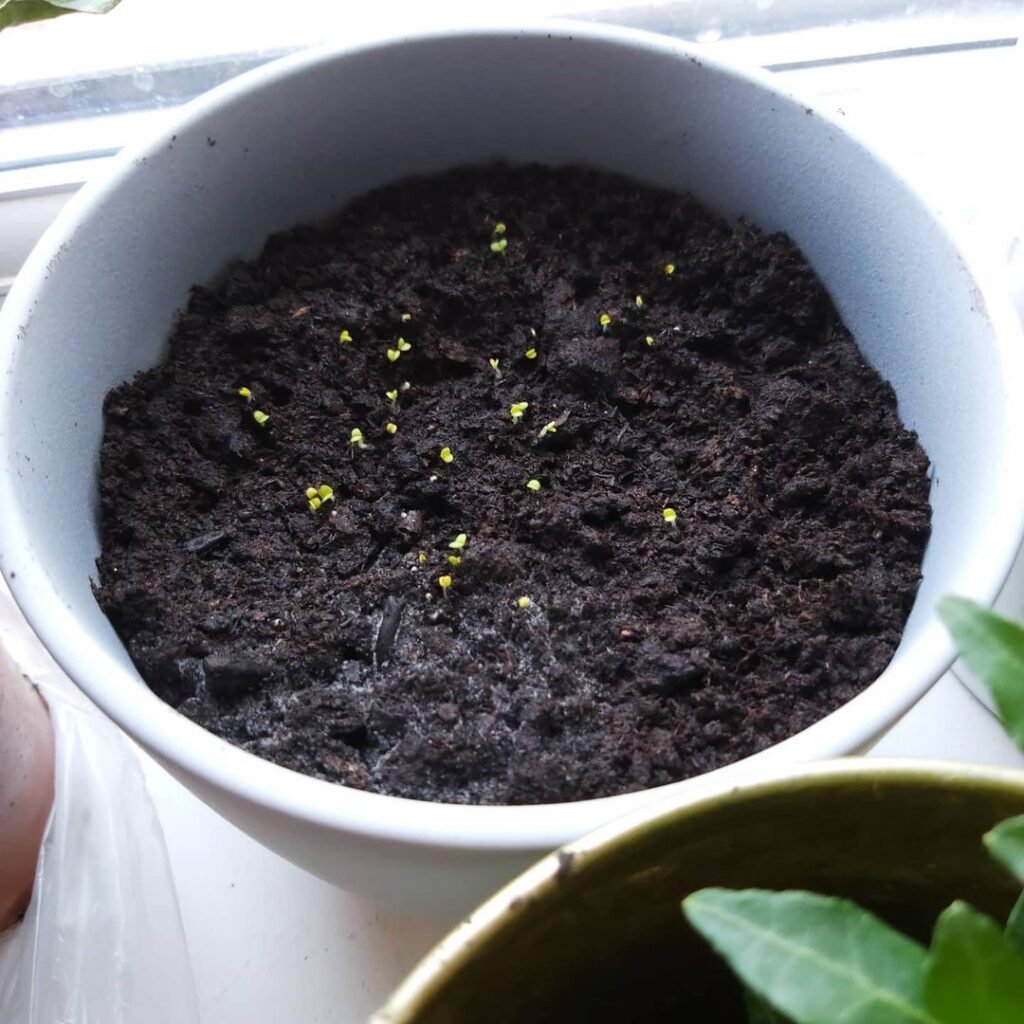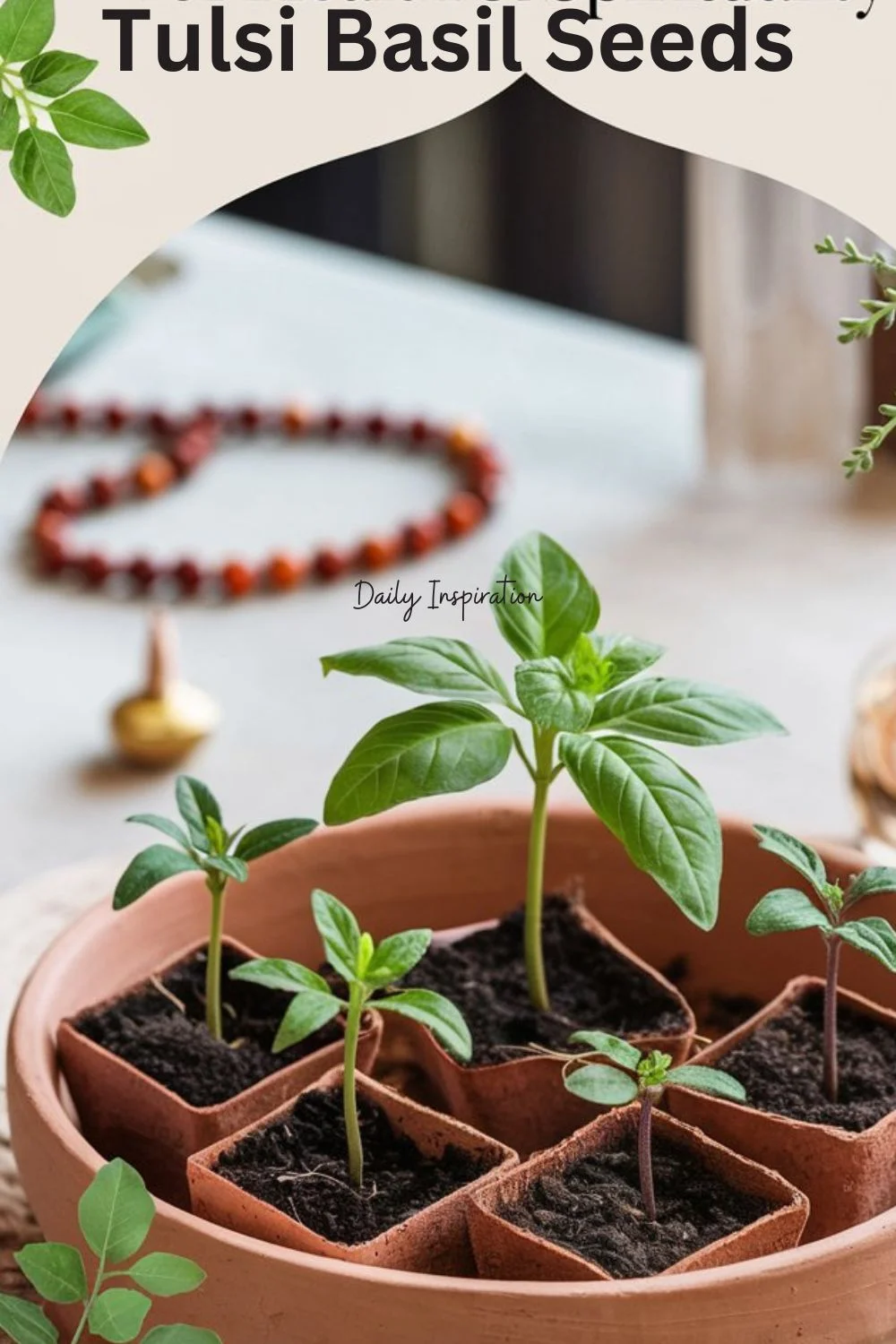Discover the secrets of growing tulsi basil from seeds in 2024. Learn expert tips on cultivation, harvesting and using this sacred herb for health and spiritual practices.
Tulsi basil seeds, also known as holy basil or Ocimum sanctum, are revered for their spiritual significance and potent health benefits. In 2024, growing tulsi from seeds has become increasingly popular among health-conscious gardeners and herbal enthusiasts. This versatile plant not only adds a unique flavor to culinary dishes but also serves as a powerful adaptogen, supporting overall wellness and stress relief.
Hello, I’m Ashley Scott, an herbalist and organic gardening expert with over 15 years of experience cultivating medicinal plants. Today, I’m excited to share my knowledge about tulsi basil seeds and how to grow this remarkable herb in your own garden or indoor space.
Understanding Tulsi Basil

Tulsi, scientifically known as Ocimum sanctum or Ocimum tenuiflorum, is a species of basil native to the Indian subcontinent. Often called “Holy Basil,” it’s one of the most revered herbs in Ayurvedic medicine and Hindu tradition. As interest in natural remedies and stress-relief plants grows, tulsi has become a popular choice for medicinal herb gardens.
Key characteristics include:
- Aromatic perennial plant growing 1-2 feet tall
- Green or purple leaves with a spicy, peppery flavor
- Small purple or white flowers
- Highly adaptable to various growing conditions
Why Grow Tulsi Basil from Seeds in 2024?

- Health Benefits: Tulsi is renowned for its adaptogenic properties, helping the body manage stress and support immune function.
- Cost-Effective: Growing from seeds is more economical than buying mature plants or dried herbs.
- Sustainability: Cultivating your own tulsi reduces reliance on commercially sourced herbs and supports biodiversity in your garden.
- Spiritual Practice: For those interested in Ayurveda or Hindu traditions, growing tulsi can be a meaningful spiritual practice.
Starting Tulsi Basil from Seeds

Sourcing Quality Seeds
Begin with high-quality, organic tulsi basil seeds. The Seed Savers Exchange is a reliable source for heirloom and organic herb seeds, including various tulsi varieties.
Sowing and Germination
- Start seeds indoors 6-8 weeks before the last frost date.
- Use a well-draining seed starting mix.
- Sow seeds 1/4 inch deep and keep soil consistently moist.
- Maintain a temperature of 70-75°F (21-24°C) for optimal germination.
- Expect germination within 5-10 days.
For those interested in hydroponic herb gardening, tulsi adapts well to water-based growing systems, making it an excellent choice for indoor herb enthusiasts.
Caring for Tulsi Basil Plants
Soil and Sunlight Requirements
- Soil: Well-draining, fertile soil with a pH between 6.0 to 7.5
- Sunlight: Full sun to partial shade; at least 6 hours of direct sunlight daily
Watering and Fertilizing
Tulsi prefers consistent moisture but is drought-tolerant once established. Use organic, balanced fertilizers monthly during the growing season. For a natural approach, compost tea is an excellent nutrient source for herb gardens.
Companion Planting
Tulsi makes an excellent companion plant in vegetable gardens. It can repel pests and enhance the growth of neighboring plants. Consider pairing it with tomatoes or peppers for a mutually beneficial relationship.
Innovative Cultivation Techniques for 2024
Vertical Herb Gardens
Maximize space by incorporating tulsi into vertical gardening systems. This method is perfect for urban gardeners or those with limited outdoor space.
Smart Garden Technology
Utilize IoT-enabled sensors to monitor soil moisture, light levels, and temperature, ensuring optimal growing conditions for your tulsi plants.
Aquaponics Integration
For sustainable gardening enthusiasts, tulsi thrives in aquaponic systems, where it can benefit from nutrient-rich water while helping to filter the system.
Harvesting and Using Tulsi Basil
Harvesting Tips
- Begin harvesting when plants reach 6-8 inches tall.
- Cut stems just above a leaf intersection to promote bushier growth.
- Harvest in the morning after the dew has dried for best flavor and medicinal properties.
Culinary Uses
Tulsi adds a unique, spicy flavor to teas, salads, and Asian-inspired dishes. It’s a key ingredient in many Thai basil recipes, offering a delicious alternative to sweet basil.
Medicinal Applications
Tulsi is widely used in herbal medicine for its adaptogenic and immune-boosting properties. It can be consumed as a tea, tincture, or in capsule form. Always consult with a healthcare professional before using tulsi for medicinal purposes.
Seed Saving and Propagation
To maintain a continuous supply of tulsi:
- Allow some plants to flower and go to seed.
- Collect seeds when flower heads turn brown and dry.
- Store seeds in a cool, dry place for future planting.
Tulsi can also be propagated through cuttings, making it easy to share with fellow herb enthusiasts.
Troubleshooting Common Issues
- Leaf Discoloration: May indicate nutrient deficiency or pest infestation.
- Slow Growth: Ensure adequate sunlight and proper soil drainage.
- Pest Control: Use neem oil or introduce beneficial insects for organic pest management.
Growing tulsi basil from seeds offers a rewarding experience for gardeners, health enthusiasts, and spiritual practitioners alike. By following these guidelines and embracing innovative cultivation techniques, you can successfully grow this sacred herb and enjoy its numerous benefits. Whether you’re sipping a calming tulsi tea or incorporating it into your culinary creations, the journey from seed to harvest is sure to enrich your gardening experience in 2024 and beyond.
For more gardening tips and plant care guides, visit usagardenhub.com





3 Comments on “Tulsi Basil Seeds : Growing Sacred Basil for Health & Spirituality”